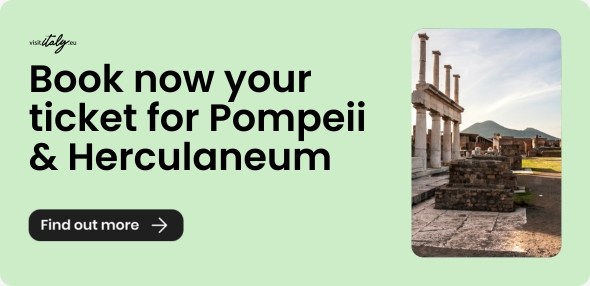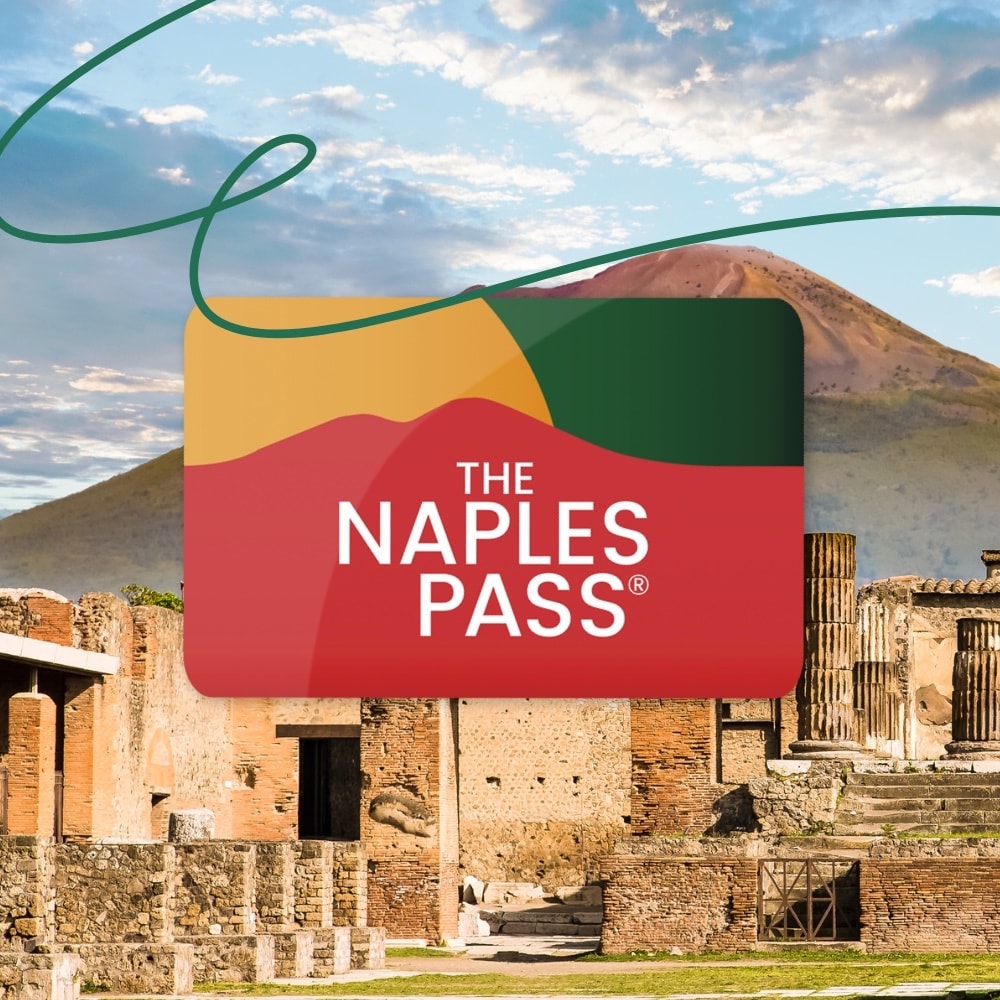The Rione Sanità is one of the most evocative and characteristic places in all of Naples and probably in Italy as well. Indeed, its tradition, folklore and colors have often attracted tourists from all over the world. It is a world suspended between the ancient and everyday, between the sacred and the profane, which has made it one of the city's major attractions in recent years. So much so that at the end of 2022, the well-known British magazine Time Out included the Rione Sanità among the 51 coolest neighborhoods in the world. The popular soul of the district mixed with the cultural and artistic renaissance of the last few years has made it world-famous, so much so that every year it is recommended in the guidebooks of things to see.

History, tradition and curiosities of the Rione Sanità

Beyond the northern boundary of the viceregal walls of the city of Naples on the slopes of the Capodimonte hill, there has always existed an area valued for its wholesomeness and naturalness: the Rione Sanità district. The term Sanità probably comes from the wholesomeness and uncontaminated nature that surrounded it. So much so that in the 17th century the area was used as a lazaret against the plague epidemic sweeping through the city.
The area was populated since antiquity and has always been beyond the city walls, so much so that it was used by both the Greeks and the Romans as a burial place. As evidence of this history, you can find several complexes of Hellenistic hypogea and early Christian catacombs. The Rione Sanità, as we know it today, began to take shape during the 16th century, when located in the countryside of the Capodimonte hill, it was destined to accommodate important noble and bourgeois families of the city of Naples, of which there is still evidence today.
Today, the district is one of the most popular in Naples and has lost its aristocratic connotation, but has become a true cradle of popular folk art in the city of Naples, attracting tourists from all over the world.
Discover the 10 best things to see in the Rione Sanità, the best neighborhood in Naples for history, tradition, culture and art.
Visit the Rione Sanità10. The Rione Sanità: Totò's home

In the heart of the Rione Sanità is the home of Antonio De Curtis, the famous artist known to all as Totò. Although the building cannot be visited, it has nevertheless managed to establish a great relationship with the neighbourhood, becoming a place of 'pilgrimage' for fans and onlookers of the famous prince of laughter. In fact, in Via Santa Maria Antesaecula and the surrounding areas, everything reminds one of Totò, from the small paintings attached to the alleys of the neighbourhood to the stencils and murals dedicated to him.
One of the most visited and photographed things dedicated to Totò is the bronze bust by the artist Salvatore Scuotto, while in the centre of the district, in the square in front of the famous lift, there is a sculpture depicting a silhouette of the famous actor that amuses young and old alike.
9. Catacombs of San Gaudioso
The catacombs of San Gaudioso are one of the most visited and interesting spots in the entire Sanità district. The catacombs are located under the church of the Madonna della Sanità and are much smaller than those of San Gennaro in the district.
Their size and shape derive from the catacombs created to house the remains of San Gaudioso, but following the further displacement of these relics, the catacombs were gradually abandoned until today, when they became one of the masterpieces of the Sanità district.
8. Street art: the Sanità murals
Another must-see in the Sanità neighbourhood is the murals. In recent years, in neighbourhoods all over Naples, as in other European or South American cities, the art of murals has spread, in some way recalling or celebrating the art and history of the city and the district. Among the best works you can encounter are undoubtedly the murals of women in vico Buongiorno by Facte, the murals between the sacred and the profane in vico Misericordiella entitled "Nu 'mmescà 'e fantasme cu ll'angiule - Don't mix up ghosts with angels", a work in favour of integration.
Going down vico Lammattari you can also encounter stencils by artist Alex Senna, while arriving in piazza Sanità you can be amazed by no less than three murals: "Resis-ti-amo" by Argentine artist Francisco Bosoletti, painted on the façade of the seventeenth-century basilica in the district and in which a woman and a man hold each other up as if in a sort of amorous dance. In the same square, you can find 'Luce' by Tono Cruz and the famous 'Tienime, ca te tengo' on the lift pylon of the Sanità bridge by Jerico Cabrera Carandang, depicting two young people intent on a deep embrace.
7. The suburb of monumental palaces
The Palazzo dello Spagnuolo is a monumental building located in the Borgo dei Vergini, one of the gateways to the Sanità district, and is one of the masterpieces to be seen in all of Naples, not only in Sanità. The name derives from the purchase of Tommaso Atienza, known as the Spaniard, at the end of the 18th century, while the building's construction features are attributed to the famous Neapolitan architect, Ferdinando Sanfelice, who created one of the most beautiful monumental staircases ever seen in Naples with a system of wide arches that followed the course of the stairs.
The palace has often been the site of film sets and in the next few years will also house the Totò museum, still under construction.
6. The suburb of the Virgins
The Borgo dei Vergini is the entrance to Sanità from Piazza Cavour and includes all of Via Vergini and Piazza Sanità up to the widening of the Ospedale San Gennaro, also known as Ospedale dei Poveri. As you walk through this small hamlet, you will realise that it hides all the typical traits of the Neapolitan city and tradition, with its beating heart due to the many daily shops and the façades of the ancient aristocratic palaces built between the 17th and 18th centuries that stand alongside churches and basilicas from three centuries earlier.
Its name has a religious origin that is once again linked to archaic Naples. In these places lived a group of people, the eunostidi who, it is said, were devoted to temperance and chastity.
5. The monument to Neapolitan Christianity

The catacombs of San Gennaro are an iconic place in the Sanità district and one of the most visited places in the neighbourhood. It is often visited by young people from the neighbourhood and cooperatives that organise guided tours through the catacombs, which serve as a gateway to the neighbourhood through the Capodimonte hemicycle.
Visiting the catacombs of San Gennaro allows one to revisit the relationship of Greco-Roman Naples with the world of the dead. In a place where there has always been a mixture of the sacred and the profane, where the Christian faith and the folklore of tradition and pagan customs mingle in everyday life. Accessing the catacombs also allows one to experience one of the charms of underground Naples, often used as a refuge first during the persecution of Christians and then during the world wars.
In these tuff quarries, one can still see the burial spaces of almost two thousand years ago and for a time the relics of San Gennaro, the city's patron saint, were also kept there before being transferred to the Naples cathedral.
4. The iconic church of the Rione Sanità

The Basilica of Santa Maria della Sanità is one of the works of the architect Fra Nuvolo, born Vincenzo de Nuvolo, and is one of the most excellent examples of Baroque architecture in Naples. In fact, it is a basilica with very sinuous lines typical of Neapolitan Baroque.
The basilica was built between 1602 and 1610 with the famous yellow and green majolica dome that stands out on the Magdalene Bridge. The plan of the church, also known as San Vincenzo alla Sanità or 'o Munacone' for the statue of St Vincent Ferrer inside, is in the shape of a Greek cross, with the presbytery side raised to incorporate the previous basilica built during the early Christian period. From the presbytery, there is, of course, also access to the catacombs of the aforementioned period.
3. Sanfelice's Neapolitan Baroque in the Rione Sanità

The Palazzo Sanfelice is one of the landmarks, if not the real symbol, of Naples' Sanità district. It was built in 1724 by the Neapolitan architect Ferdinando Sanfelice. It served as the private residence of several noble families who wanted to escape from the city chaos and enjoy the tranquillity of an area bordering Capodimonte hill. The building was constructed using the existing structure of an adjacent palace. Upon entering, you will immediately recognise one of the peculiarities of Sanfelice's architecture, namely the falcon-winged staircase overlooking a beautiful garden at the back.
The interior was completely decorated with frescoes commissioned by Francesco Solimena, overlooking sculptures by Giuseppe Sammartino. Today, only the stuccoes are a reminder of this glorious and opulent past, but it also attracts contemporary artists such as Zilda, the French artist, who created one of her works right here, between the flights of the Sanfelice staircase. The work, entitled 'the wind weighs as much as the chains', depicts a naked man chained from behind, his head bowed, gazing at the sea with Vesuvius in the background.
2. At the Sanità the best museums in Naples: Capodimonte and the National Archaeological Museum

On the edge of Sanità are two of the most important museums in Naples: the Capodimonte Museum in the Royal Palace of the same name and the MANN, the National Archaeological Museum of Naples. Inside the royal palace of Capodimonte, some of the most beautiful and iconic works of European, Italian and Neapolitan art are kept: Titian, Michelangelo, Raphael, Masaccio, Parmigianino, Carracci, Ribera, Giordano, Caravaggio are just some of the painters and artists you can find in the Capodimonte Museum, as well as great works of 19th-century and contemporary Neapolitan production.
The National Archaeological Museum, on the other hand, houses some of the best finds from the city's excavations, but also from Pompeii and Herculaneum and remains from imperial Rome, together with a section containing the Egyptian collection, with objects dating back 5000 years.
Buy your pass to see the best museums in Naples1. Rione Sanità between sacred and profane

Last but not least, the Fontanelle cemetery, a true historical masterpiece not only of the Sanità district, but also of the entire city. It is an emotional and almost otherworldly experience. The Fontanelle cemetery is a charnel house with the remains of thousands of people who, over the centuries, have crammed into the remains of this tufa quarry. The bodies of those who could not be given a dignified burial or the victims of the epidemics that struck the city were kept here.
It was here that the ritual of the 'pezzentelle souls' took place, in which Neapolitans have always asked for an otherworldly favour by adopting and caring for one of the skulls in the ossuary. Every crevice of these tuff quarries in the Fontanelle Cemetery.
About the author
Written on 02/03/2023




Mario Galterisi
Discover the beauty of Naples' most evocative and characteristic district. Among food, art and tradition: here is a guide to the Rione Sanità.